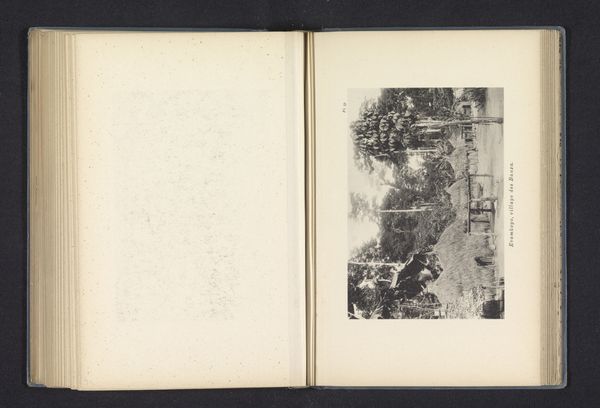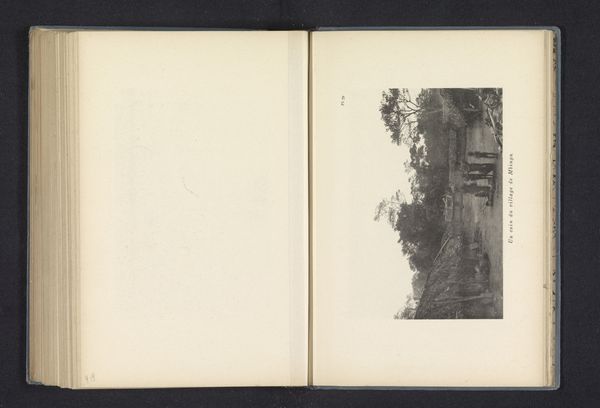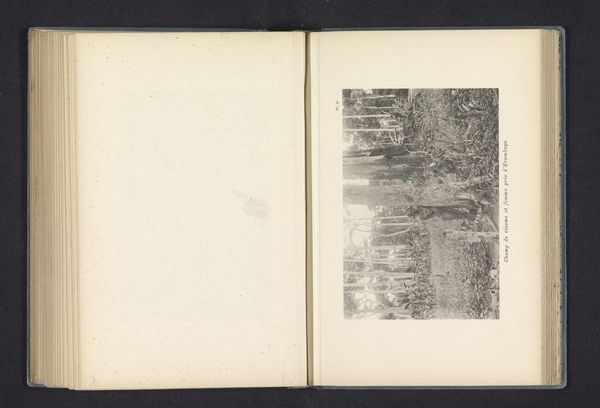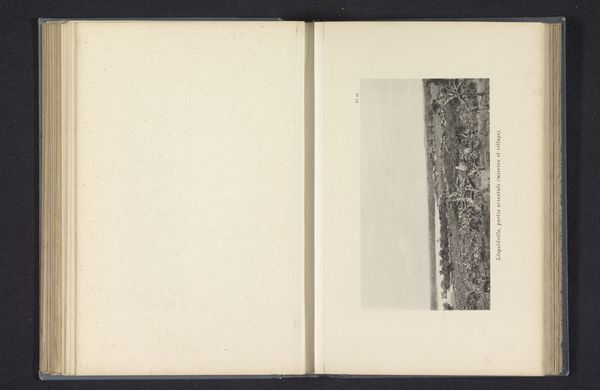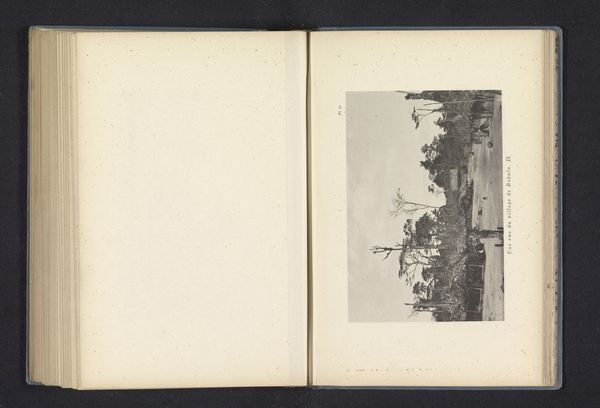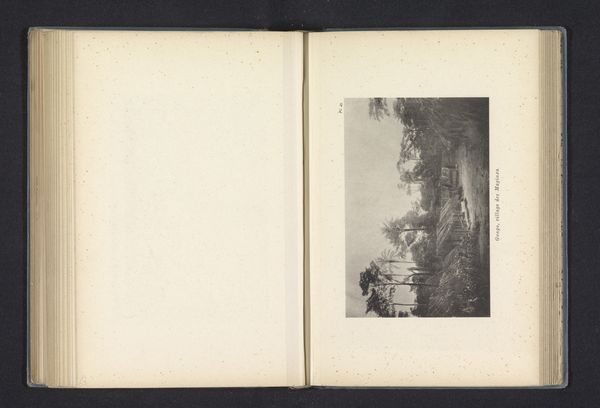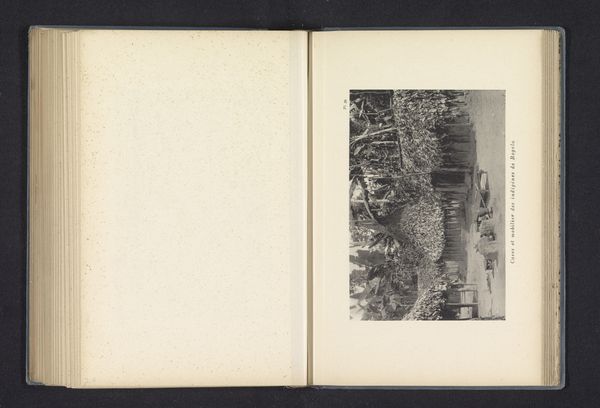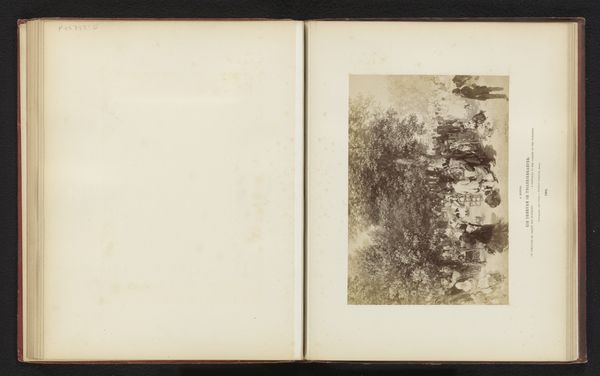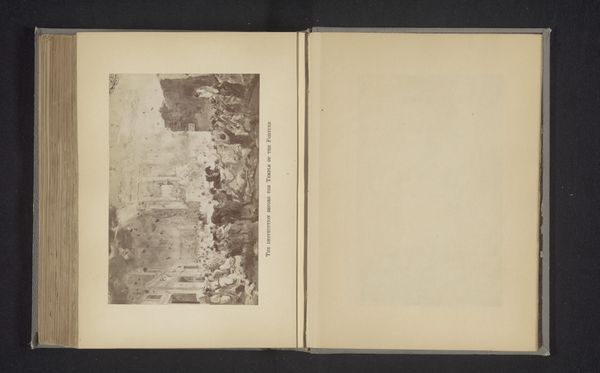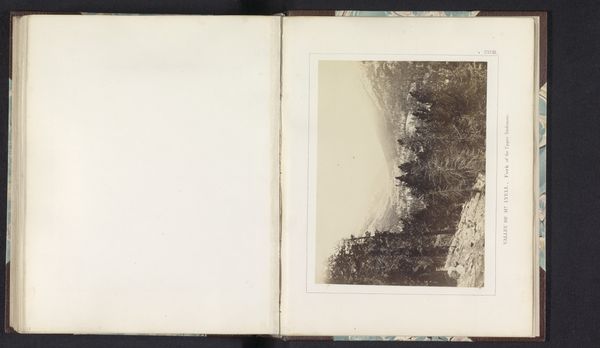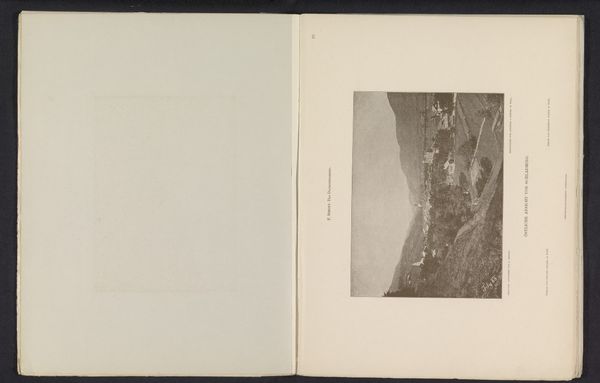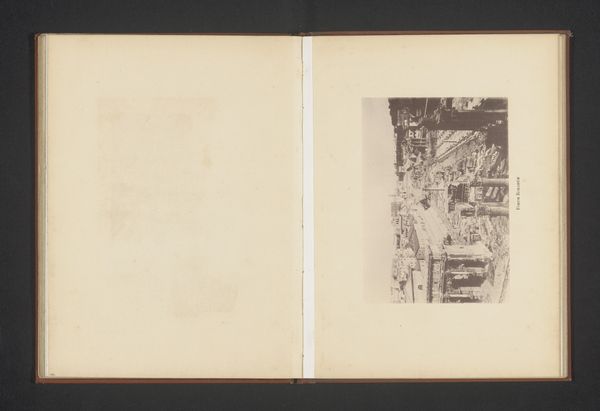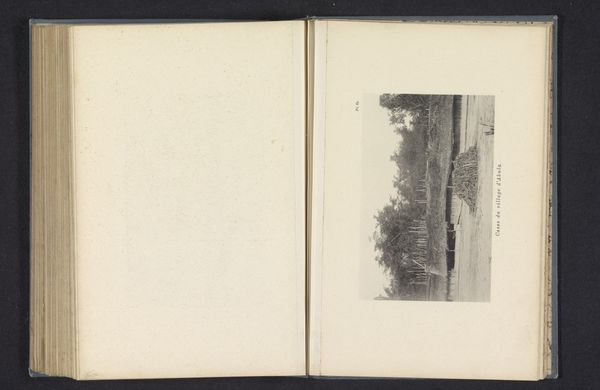
print, photography
#
african-art
# print
#
landscape
#
photography
#
realism
#
building
Dimensions: height 108 mm, width 161 mm
Copyright: Rijks Museum: Open Domain
Curator: Here we have a page from a volume showcasing photography from Franz Thonner dating to 1896, titled "Woningen in een Banzadorp nabij Bogolo." It’s a striking image of a settlement somewhere in what was then known as the Congo Free State. Editor: My first thought? Dense. Almost claustrophobic. The buildings seem swallowed up by the vegetation, yet there’s also a feeling of... vulnerability in this printed rendering. Curator: It’s printed rather than straight photography, a subtle distinction, and worth considering. Think about how mass media technology would have spread images from colonial projects far and wide, creating ideas of an exotic “other”. Editor: You're right, that distance! The process becomes as crucial as the scene. I was initially caught by how nature is simultaneously protective and encroaching here. Are the materials sourced locally for construction I wonder? Curator: More than likely. This book serves as an early example of photographic documentation being used to catalog resources and living conditions for colonial powers. I imagine the houses are built with readily available material, using traditional crafting skills. Editor: Which means skill, knowledge passed down... But here it is captured for external consumption, devoid of names and narratives of the inhabitants. There is something of a document of subjugation in the lack of detail regarding inhabitants' perspectives and lives, their culture made an item of public display. Curator: Precisely, it embodies both a record of place and the power dynamic inherent in its creation and distribution. Think about it being viewed in Europe. Editor: The composition leads my eyes away, searching through layers as my mind wonders what songs or whispers carried through that air on the day this frame was pressed? Curator: It reminds us how seemingly objective images are deeply embedded in social and political histories, shaped by the technology that made it and those who commissioned it. Editor: Indeed; so much to unpack in what at first glance felt like just another landscape!
Comments
No comments
Be the first to comment and join the conversation on the ultimate creative platform.
